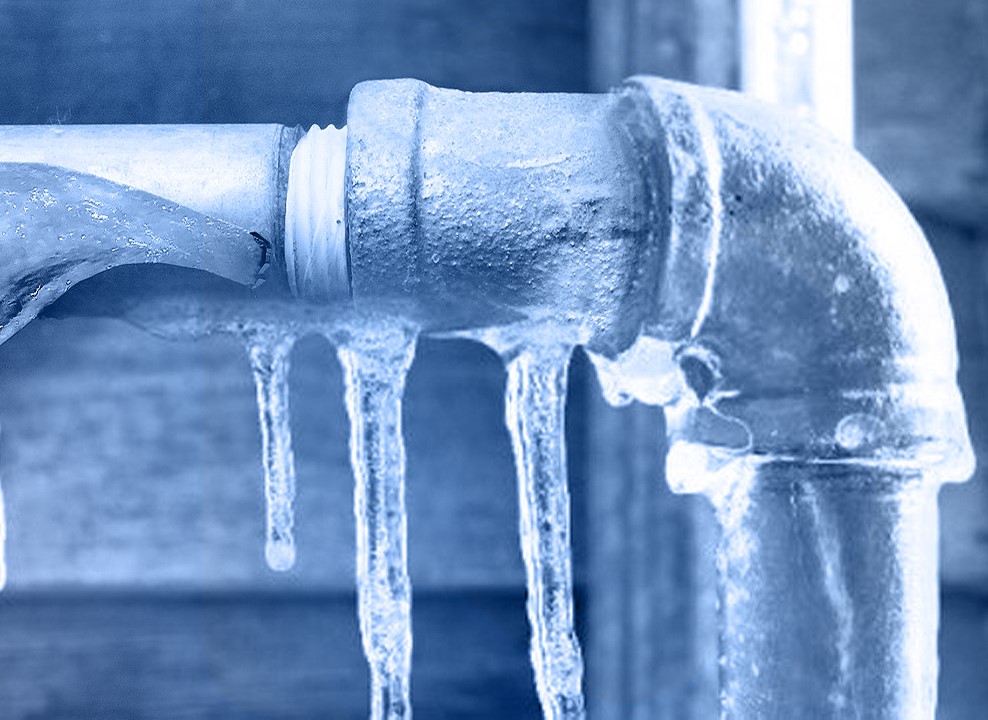Protect Against Frozen Plumbing in Winter: Expert Tips
Protect Against Frozen Plumbing in Winter: Expert Tips
Blog Article
Each person seems to have his or her own theory about Prevent Frozen Pipes .

Winter can damage your pipes, specifically by freezing pipes. Below's how to avoid it from occurring and what to do if it does.
Introduction
As temperature levels decrease, the risk of icy pipelines boosts, possibly bring about costly repair services and water damages. Understanding just how to avoid frozen pipelines is critical for homeowners in chilly environments.
Recognizing Frozen Pipes
What causes pipes to ice up?
Pipes ice up when subjected to temperature levels listed below 32 ° F (0 ° C) for prolonged durations. As water inside the pipes freezes, it expands, putting pressure on the pipeline walls and possibly causing them to rupture.
Risks and damages
Frozen pipes can result in water supply disruptions, property damages, and costly fixings. Ruptured pipes can flood homes and create considerable architectural damage.
Indications of Frozen Pipes
Recognizing icy pipes early can stop them from breaking.
Just how to recognize frozen pipelines
Search for decreased water flow from faucets, uncommon odors or noises from pipes, and noticeable frost on exposed pipes.
Prevention Tips
Shielding prone pipes
Cover pipes in insulation sleeves or use warmth tape to protect them from freezing temperatures. Concentrate on pipelines in unheated or exterior locations of the home.
Heating techniques
Maintain interior areas properly warmed, particularly areas with plumbing. Open up cabinet doors to permit warm air to circulate around pipes under sinks.
Shielding Outside Plumbing
Garden pipes and outside taps
Separate and drain pipes garden hose pipes prior to winter season. Mount frost-proof faucets or cover exterior taps with shielded caps.
What to Do If Your Pipes Freeze
Immediate actions to take
If you believe frozen pipelines, keep faucets available to alleviate pressure as the ice melts. Make use of a hairdryer or towels taken in hot water to thaw pipes slowly.
Long-Term Solutions
Structural adjustments
Think about rerouting pipelines away from exterior wall surfaces or unheated locations. Add added insulation to attics, cellars, and crawl spaces.
Upgrading insulation
Buy top notch insulation for pipelines, attic rooms, and walls. Correct insulation helps keep regular temperature levels and decreases the danger of icy pipelines.
Verdict
Preventing frozen pipes calls for positive actions and quick responses. By recognizing the causes, indicators, and safety nets, home owners can protect their pipes during winter.
5 Ways to Prevent Frozen Pipes
Drain Outdoor Faucets and Disconnect Hoses
First, close the shut-off valve that controls the flow of water in the pipe to your outdoor faucet. Then, head outside to disconnect and drain your hose and open the outdoor faucet to allow the water to completely drain out of the line. Turn off the faucet when done. Finally, head back to the shut-off valve and drain the remaining water inside the pipe into a bucket or container. Additionally, if you have a home irrigation system, you should consider hiring an expert to clear the system of water each year.
Insulate Pipes
One of the best and most cost-effective methods for preventing frozen water pipes is to wrap your pipes with insulation. This is especially important for areas in your home that aren’t exposed to heat, such as an attic. We suggest using foam sleeves, which can typically be found at your local hardware store.
Keep Heat Running at 65
Your pipes are located inside your walls, and the temperature there is much colder than the rest of the house. To prevent your pipes from freezing, The Insurance Information Institute suggests that you keep your home heated to at least 65 degrees, even when traveling. You may want to invest in smart devices that can keep an eye on the temperature in your home while you’re away.
Leave Water Dripping
Moving water — even a small trickle — can prevent ice from forming inside your pipes. When freezing temps are imminent, start a drip of water from all faucets that serve exposed pipes. Leaving a few faucets running will also help relieve pressure inside the pipes and help prevent a rupture if the water inside freezes.
Open Cupboard Doors
Warm your kitchen and bathroom pipes by opening cupboards and vanities. You should also leave your interior doors ajar to help warm air circulate evenly throughout your home.

I hope you liked our topic about How to Prevent Your Pipes From Freezing. Thank you for taking the time to read through our short article. Appreciated our blog? Please quickly share it. Let someone else check it out. Many thanks for your time invested reading it.
Click Here Report this page